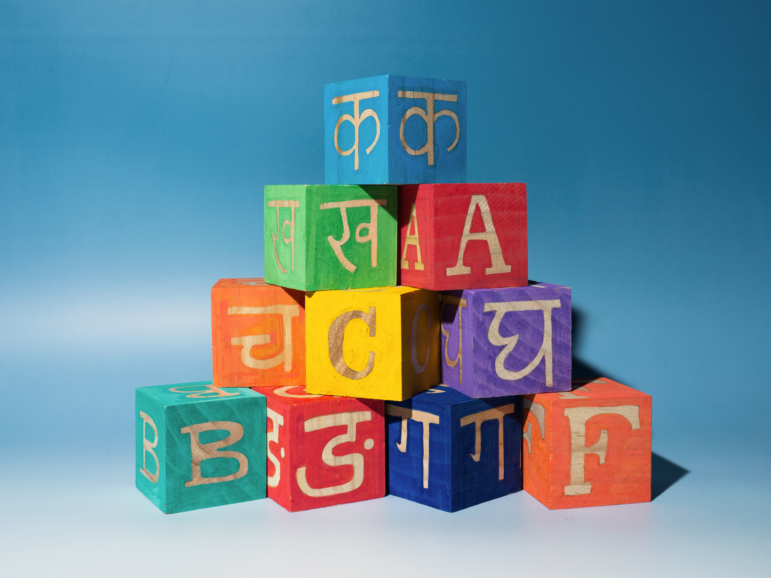When journalist Conz Preti brought her three children to visit family in Argentina in 2022, her four-year-old son did something surprising.
“He just started fluently speaking in Spanish with my family, with no hesitation, no mistakes,” Preti says.
In their house, she speaks to her children in Spanish and her husband speaks to them in English. But up until that point, her son “never, never talked to me in Spanish. Suddenly, it clicked,” she says.
Raising bilingual kids can feel like a challenge — especially on top of so many other things parents worry about.
But with “consistency, exposure and practice, practice, practice,” it’s possible to successfully teach your child two or more languages, says Liliana Diaz, a bilingual speech-language pathologist who is raising her two kids to speak Spanish and English. No expensive language lessons or language immersion school required.
“Children are like sponges absorbing everything they’re seeing and hearing,” says Farwa Husain, a bilingual speech-language pathologist who is raising her three children to speak Hindi, Urdu and English.
Whether you want your kids to learn your heritage language or the French you mastered in college, Diaz and Husain offer expert, parent-approved advice on how to cultivate a multilingual household.
Let go of a common misconception
Some parents worry that teaching their child multiple languages will set them back or confuse them. But that’s a myth, Husain says.
According to a 2013 article in the journal Learning Landscapes, kids who speak two languages are not more likely than kids who speak one language to “have difficulties with language, to show delays in learning or to be diagnosed with a language disorder.”
The article also notes that “code-mixing,” or using two languages in the same sentence, is often interpreted as confusion. It’s actually a “normal part of bilingual development,” and even a sign of “bilingual children’s ingenuity,” according to the researchers.
In fact, being bilingual can come with several benefits. Studies have shown it can improve cognitive function, help with multitasking and boost academic achievement.
Pick a language strategy for your family
There are many effective ways to incorporate multiple languages with your kids at home. Pick an approach that works for your family, Diaz says. Our experts recommend a few techniques from the field of bilingual-speech language pathology.
- One parent, one language. Each caregiver speaks one language consistently with the child. For example, one parent speaks with the child in Mandarin and the other speaks in Hindi consistently at all times.
- Time and place. The family decides that, say, on Sundays, at breakfast or when they’re at grandma’s house, they will speak the minority language.
- Minority language at home. Everybody will speak the minority language at home, and then as the child goes to school, they’re exposed to the majority language.
- Mixed languages at home: Caregivers and kids all speak all languages simultaneously at home. It may sound confusing, but it works well in practice, Husain says. “Children are able to decipher very quickly what each language is.”
Whichever technique you decide on, stick with it, say our experts. “That’s what it takes to learn a language,” Diaz says.
Create an immersive language environment at home
There are many small, constructive ways to incorporate multiple languages into your day-to-day life. The exposure can add up, according to our experts. Here are a few ideas:
- Do the activities you’re already doing with your kids in the second language. “Whether that’s listening to music in the car, watching cartoons on TV, going on playdates or reading,” Diaz says. Aim for “consistency, not perfection.”
- Video-call relatives. “Being able to FaceTime a grandparent, sibling or cousin and have that back and forth with them in another language is so important,” Husain says. “You’re building those same skills as if you’re doing it in person.”
- Celebrate cultural events. Providing children with the cultural context around their second language can make language learning more fun. Diaz makes a point to celebrate Día de Los Muertos with her two children so they have a connection to their Mexican heritage. “Language is culture, which is identity,”
- Foster curiosity. Preti says she and her husband, who is fluent in French, “always play and experiment with language with the kids. The other day, they wanted to know how to say some words in French, and were starting to pick up the similarities between Spanish and French.”
Embrace imperfection
There will be times when your child just wants to speak the dominant language or mix their dominant and non-dominant languages together, and that’s OK, our experts say.
Don’t force it, Diaz says. “If you want them to speak in a particular language at the moment,” acknowledge what the child is saying first “then model and respond in that language.”
If your child is code-mixing, don’t try to correct them, Husain says. Instead, use it as an opportunity to engage.
Diaz says she loves when her son tries “to carry one language over to the other. Sometimes he’ll say these mixed English-Spanish words, and I’m like, ‘Oh, that’s a good one. I never thought of saying it that way.'”
And have some patience. Preti says sometimes her kids will tell her they don’t understand her when she’s speaking to them in Spanish. “I’m like, ‘But you understand what I’m saying right now?’ And they’re like, ‘Yeah.’ And I’m like, ‘Well, this is Spanish.'”
Eventually, your child will get it, even if they don’t realize it.
This episode was produced by Sam Yellowhorse Kesler. The digital story was edited by Malaka Gharib. The visual editor is Beck Harlan. We’d love to hear from you. Leave us a voicemail at 202-216-9823, or email us at LifeKit@npr.org.
Listen to Life Kit on Apple Podcasts and Spotify, and sign up for our newsletter. Follow us on Instagram: @nprlifekit.

